Research - (2021) Volume 9, Issue 5
A Study of Estimation and Analysis of Hepatitis B Antibody Titres in Adolescent Children Attending a Tertiary Care Hospital
Antony Leo Jerry T and S Sundari*
*Correspondence: S Sundari, Department of Paediatrics, Sree Balaji Medical College and Hospital Affiliated to Bharath Institute of Higher Education and Research, India, Email:
Abstract
Hepatitis is a general term for an inflammation of the liver due to a variety of causes including metabolic diseases, drugs, alcohol, toxins, and viruses. The hepatitis B virus (HBV) is a major cause of infectious liver disease. The present study includes to determine and compare the Hepatitis B antibody levels among immunized and unimmunized adolescents and to estimate and compare the anti HBs titres among the immunized and unimmunized adolescent children aged 10-19 years. The present study focuses on the clinical profile of the study population.
Keywords
Hepatitis, Adolescent, Immunized, Liver, Antibody, Clinical profile, Population
Introduction
Worldwide approximately 30 million people are persistent carriers of HBV. In East Asia, where vertical transmission of HBV is the major cause of infection, more than 20 per cent of the population are chronic carriers. The clinical correlation of HBV infection is extremely unpredictable. The virus can cause a disease of variable duration and severity, ranging from a subclinical form to acute hepatitis, gall bladder disorders and severe chronic liver disease [1-4]. Since vaccination is the only route for eradication of HBV, development and delivery of a vaccine which is effective against all strains, and which induces a response in all vaccine recipients without exceptions, is an absolute requirement [5].
In India hepatitis B vaccine in the National universal immunization program in the entire country in 2011 -12 6. Initially, a 3-dose schedule of 6 th week and 10 week and 14 weeks. This was later changed to 6, 10 and 14 weeks with an additional dose being given within 24 hours of birth, where possible [7].
Materials and Methods
Study design
This study was conducted as a cross sectional study.
Study area
This study was conducted in the Department of Pediatrics in Sree Balaji Medical College and Hospital, Chennai.
Study population
Vaccinated and unvaccinated (for Hepatitis B vaccine) adolescents between age group of 10-19 years, who attended the department of pediatrics, were included in this study.
Study period
This study was conducted during the period of April 2017 to March 2018.
Inclusion criteria
All children who attended pediatrics outpatient department.
Exclusion criteria
Immuno compromised children.
Vaccination status unknown.
Sample size
160 children who were vaccinated with Hepatitis B vaccine and 160 children who were unvaccinated with Hepatitis B vaccine in the age group of 10 -19 years. A total of 320 adolescents were included in the study.
Ethical committee approval
Ethical committee approval was obtained for this study from the institutional Human ethics committee in Sree Balaji Medical College and Hospital, Chennai.
Methods
One hundred sixty adolescents aged 10-19 years who were vaccinated with Hepatitis B vaccine and One hundred sixty adolescents who were unvaccinated with Hepatitis B vaccine in the same age group were included as participants. The individual participant was explained about the study and they were also assured that, their identity would be kept strictly confidential. Written informed consent was obtained from the study participant and from their parents in Both the English and Tamil formats of the Informed consent are enclosed in Annexure. After taking consent, using a proforma, history regarding the vaccination status of the participants was collected and entered, following which venous blood samples were collected from all the participants to assess the Anti HBC and Anti HBs antibodies titre by ELIZA method, the procedure of which is as follows.
The test principle is based on Antigen Sandwich Enzyme Immunoassay. In this technique, serum samples containing HBs antibody can react with coated recombinant HBs Ag (ad and ay subtypes). After incubation and washing, attached HBs antibodies revealed by adding HBs antigen HRP-conjugate which reacted with attached HBs antibody chromogen substrate is added and incubated for 15 minutes, resulting in the development of a dark blue colour. The colour development is stopped with the addition of stop solution, and the colour is changed to yellow and measured spectro photometrically at 450 nm. The concentration of HBs anti body is directly proportional to the colour intensity of the test sample. Results are interpreted on the context of clinical manifestation, medical history, and other diagnostic tests.
✓ Those with anti-HBs antibody greater than 10 mIU/ml should be considered as positive or considered that patient has detectable level of antibody.
✓ Those with anti-HBs antibody lower than 10 mIU/ml should be considered as negative or undetectable level of antibody in patient’s sample.
✓ Anti Hbc titre were reported as positive and negative.
Data analysis
The data was entered in excel sheet and analyzed using SPSS (Version 16). Descriptive statistics with mean, standard deviation, and proportion (%) was calculated for quantitative variables. To test the hypothesis ANOVA, Z test and Chi Square test were used. p value <0.05 was considered as statistically significant.
BG prasad scale
The socio-economic classification was measured based on the BG Prasad scale. This scale was introduced in 1961 was later modified in 1982, 2001, 2013 and in 2016. The scale is updated periodically as inflation is an ongoing process. There are tools and calculations available which enables real time update of the classification to maintain the validity of the published data. The revised Classification for 2016 is as follows (Table 1).
| Social Class | Amount (Rs./month) |
|---|---|
| I (upper class) | 6261 and above |
| II (upper middle class) | 3099-6260 |
| III (middle class) | 1835-3098 |
| IV (lower middle class) | 949-1834 |
| V (lower class) | <948 |
Table 1: BG prasad scale.
Results
A cross sectional study was done among 320 adolescents attending the Department of Pediatrics, SBMCH. The study included 160 adolescents who were vaccinated with Hepatitis B vaccine and 160 adolescents who were unvaccinated with Hepatitis B vaccine in the age group of 10-19 years. There was no refusal of the participants to take part in the study. Among the selected 320 adolescents, 55.6% were males and 44.4% females. Of the total participants, 58.12% (186) were males and 41.88% (134) were females. Among them 37.10% (69) of males and 39.55% (53) of females belonged to 10-13 years , 37.63% (70) of males and 32.84% (44) of females belonged to 14-16 years and 25.27% (47)of males and 27.61% (37) females belonged to 17 -19 years (Table 2 and Figure 1).
| Age | Sex | Total n (%) | |
|---|---|---|---|
| Male n (%) | Female n (%) | ||
| Oct-13 | 69 (37.10%) | 53 (39.55%) | 122 (38.12%) |
| 14-16 | 70 (37.63%) | 44 (32.84%) | 114 (35.63%) |
| 17-19 | 47 (25.27%) | 37 (27.61%) | 84 (26.25%) |
| Total | 186(58.12%) | 134(41.88%) | 320 (100%) |
Table 2: Age distribution of the participants.
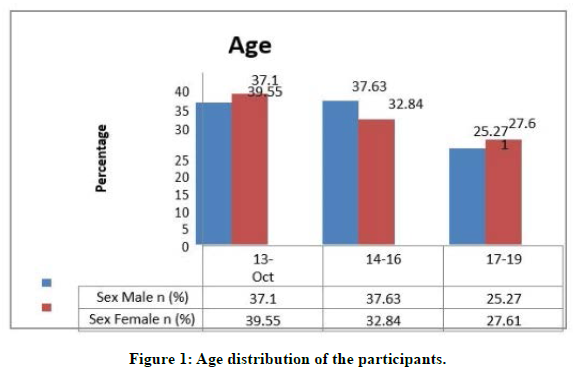
Figure 1. Age distribution of the participants.
In the study, 58.12% (186) of the total participants were males, 41.88% (134) were females (Table 3 and Figure 2). Among the mothers, 10.93% (35) were illiterates, 25.62% (82) had finished primary school. 33.44% (107) and 21.56% (69) had done middle school and higher secondary school, respectively. 8.45% (27) were graduates (Table 4 and Figure 3).
| Sex | Frequency | Percentage (%) |
|---|---|---|
| Male | 186 | 58.12% |
| Female | 134 | 41.88% |
| Total | 320 | 100% |
Table 3: Gender distribution of the participants.
| Mother’s education | Frequency | Percentage (%) |
|---|---|---|
| Illiterate | 35 | 10.93% |
| Primary | 82 | 25.62% |
| Middle school | 107 | 33.44% |
| HSC | 69 | 21.56% |
| Graduate | 27 | 8.45% |
| Total | 320 | 100% |
Table 4: Details of educational status of the mothers.
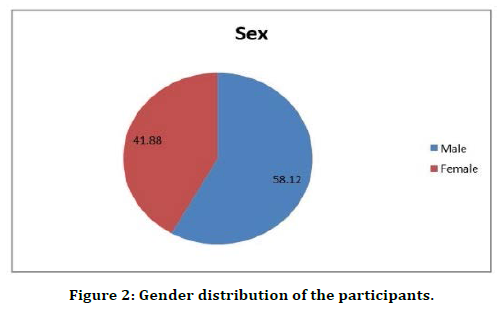
Figure 2. Gender distribution of the participants.
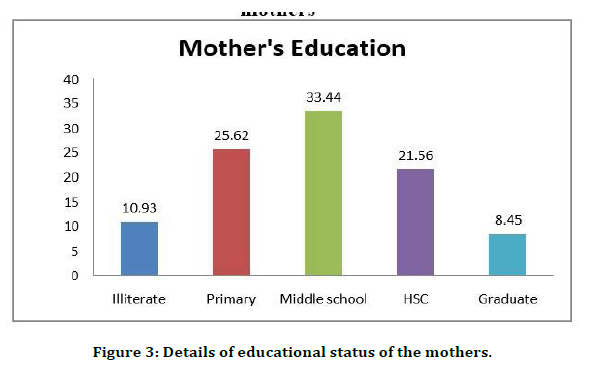
Figure 3. Details of educational status of the mothers.
In the study it was found that 7.19% (23) of fathers were illiterates, 23.44% (75) had stopped with primary school and 18.43%(59) with middle school. 34.69% (111) have done HSC and 16.25% (52) were graduates (Table 5 and Figure 4).
| Father’s Education | Frequency | Percentage (%) |
|---|---|---|
| Illiterate | 23 | 7.19% |
| Primary | 75 | 23.44% |
| Middle school | 59 | 18.43% |
| HSC | 111 | 34.69% |
| Graduate | 52 | 16.25% |
| Total | 320 | 100% |
Table 5: Details of Educational status of the fathers.
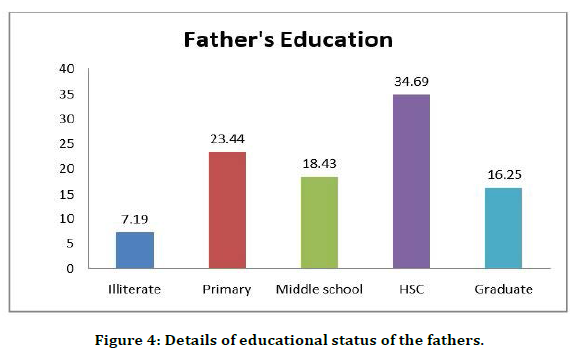
Figure 4. Details of educational status of the fathers.
Of total adolescents who participated 25.63% (82) were from rural areas and 74.37% (238) were from urban areas (Table 6 and Figure 5). Among participants 49.37% (158) belong to lower and 30.63% (98) belonged to lower middle class. Middle class and upper middle class had 9.06%(29) and10.94% (35) respectively (Table 7 and Figure 6).
| Area of Residence | Frequency | Percentage (%) |
|---|---|---|
| Rural | 82 | 25.63% |
| Urban | 238 | 74.37% |
| Total | 320 | 100% |
Table 6: Area of residence of the participants.
| Socio economic status | Frequency | Percentage (%) |
|---|---|---|
| Lower | 158 | 49.37% |
| Lower middle | 98 | 30.63% |
| Middle | 29 | 9.06% |
| Upper middle | 35 | 10.94% |
| Total | 320 | 100 |
Table 7: Socio economic status of the participants.
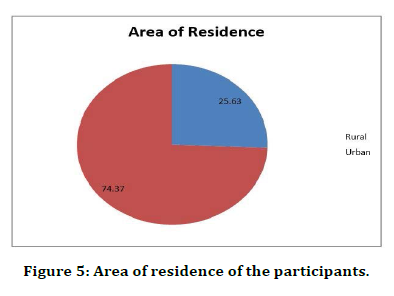
Figure 5. Area of residence of the participants.
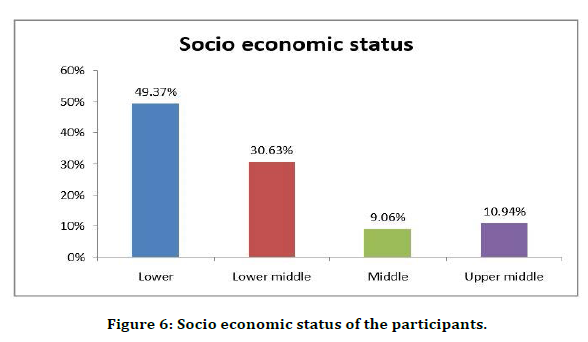
Figure 6. Socio economic status of the participants.
In the study 43.8% (70) were vaccinated and 40% (64) were unvaccinated in 10 -13 years. Among 14 -16 years.41.2% (66) were vaccinated and 34.4% (55) were unvaccinated .15% (24) and 25.6% (41) were vaccinated and unvaccinated in 17 -19 years age group. This was not found to be statistically significant (p=0.57) (Table 8 and Figure 7).
| Age group | Vaccinated | Unvaccinated | Chi sq value | P value |
|---|---|---|---|---|
| 10-13 years | 70(43.8%) | 64(40%) | 5.7 | 0.57 |
| 14-16 years | 66 (41.2%) | 55(34.4%) | ||
| 17-19 years | 24 (15%) | 41(25.6%) | ||
| Total | 160 | 160 |
Table 8: Association between age distribution and vaccination.
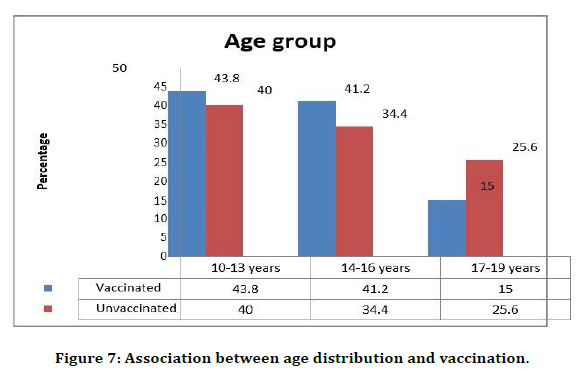
Figure 7. Association between age distribution and vaccination.
55.6% (89) were vaccinated and 60.6% (97) were unvaccinated among males, among females 44.4% (71) were vaccinated and 39.4% (63) were unvaccinated. This was not found tobe statistically significant (p=0.906) (Table 9 and Figure 8).
| Sex | Vaccinated | Un vaccinated | OR | P value |
|---|---|---|---|---|
| Male | 89 (55.6%) | 97 (60.6%) | 0.814 | 0.906 |
| Female | 71 (44.4%) | 63 (39.4%) | ||
| Total | 160 | 160 |
Table 9: Association between gender distribution and vaccination.
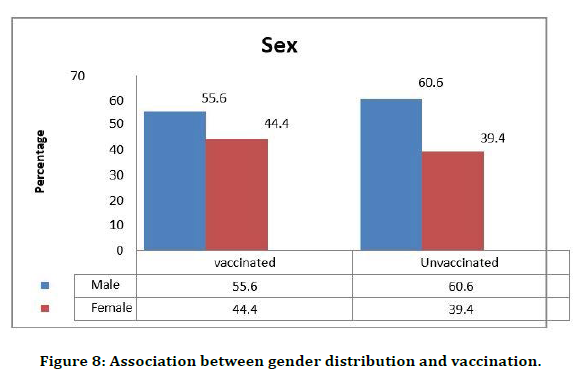
Figure 8. Association between gender distribution and vaccination.
Discussion
This cross-sectional study was done to determine and compare the anti HBs and anti HBc levels among immunized and unimmunized adolescents. In this study, adolescents who had received HB immunization, showed a higher rate of anti-HBs positivity, and a reduced rate of anti- HBC positivity, than a cohort of adolescents who had not received the immunization. Among the immunized individuals in our study, anti HBs titre was less than 10 IU/L in 7.5% participants with mean and SD of 6.31±3.3, whereas it was 10 -400 IU/L in 51.3% individuals with mean and SD of 286.34±103.13 and >400 IU/L in 41.3% individuals with mean and SD as 1125.84±345.18.
In the present study, among 88.7% adolescents who got vaccinated 48.1% were males and 40.6% were females. The difference among vaccinated and unvaccinated adolescents for anti HBs was found to be highly statistically significant. (p value<0.001). In a study among 1415 children who were vaccinated there were 735 males and 680 females.
In the present study 43.8% (70) were vaccinated and 40% (64) were unvaccinated in 10 -13 years. Among 14 -16 years 41.2% (66) were vaccinated and 34.4% (55) were unvaccinated .15% (24) and 25.6% (41) were vaccinated and unvaccinated in 17 -19 years age group. This was not found to be statistically significant (p=0.57).
Similarly, among 5% of vaccinated adolescents 3.1% were boys and 1.9% was girls and the difference for anti HBC was not statistically significant. (p value >0.05). In a among immunized children, 28 participants were found to have Anti- HBC positive.
55.6% (89) were vaccinated and 60.6% (97) were unvaccinated among males, among females 44.4% (71) were vaccinated and 39.4% (63) were unvaccinated in the present study. This was not found to be statistically significant (p=0.906).
In our study mothers of 9.4% (15) of vaccinated and 12.5% (20) unvaccinated children were illiterates, 25.6% (41) of both groups of mothers had completed primary school, 31.9% (51) and 35 % (56) of mothers from vaccinated and unvaccinated groups had finished middle school. Of the total 10% (16) of vaccinated mothers and 6.9% (11) of unvaccinated mothers were graduates in our study. The association between vaccination and mother’s education was not found to be statistically significant (p=0.692). Among the fathers of vaccinated adolescents 5.6% (9) were illiterates, 21.9% (35) had finished primary school, 20% (32) had done middle school, 33.1% (53) have completed HSC and 19.4% (31) were graduates. In the unvaccinated group 8.8% (14) were illiterates, 25% (40) had primary education, 16.9% (27) completed middle school, 36.3% (58) did HSC and 13.1 % (21) were graduates. The association between the father’s education and vaccination was not found to be statistically significant (p = 0.41).
In the vaccinated group 31.9% (51) belonged to rural areas and 68.1% (109) belonged to urban areas. Among unvaccinated 19.4% (31) belonged to rural areas and 80.6% (129) belonged to urban areas in the present study. The association between the area of residence and vaccination was found to be statistically significant (p = 0.01).
Our study showed that in vaccinated group 43.1 (69) belonged to the lower and 30.6% (49) belonged to the lower middle class, 13.8% (22) belonged to middle class and 12.5% (20) belonged to upper middle class. In the vaccinated group 55.6%(89) were poor , 30.6% (49) were in the lower middle class , 4.4%(7) belonged to middle class and 9.4%(15) belonged to upper middle class. It was not found to be statistically significant (p=0.117)
Among the 10-13 years vaccinated children had anti HBs titres of 853.56 while it was 0.34 in case of unvaccinated, in 14-16 years vaccinated group had 791.48 while unvaccinated had 0.26, 17-19 years age group had 892.27 in case of vaccinated and 0.28 in case of unvaccinated in our study. The association between Anti HBs titres and age was found to be statistically significant (p=<0.05). In the study vaccinated males had anti HBs levels of 867.38 while unvaccinated had 0.29. Vaccinated females had levels of 842.83 and unvaccinated had levels of 0.32. It was found to be statistically significant (p<0.05).
In the present study vaccinated adolescents in rural areas had anti HB stitre of 803.48 while unvaccinated had 0.13 in urban areas, vaccinated had 899.42 while unvaccinated had 0.34. It was found to be statistically significant (p<0.05)
The present study showed that the mean anti HBs levels among illiterate mothers were 832.42 in case of vaccinated children and 0.29 in case of unvaccinated group. In mothers with primary education, it was 867.42 in vaccinated group and 0.26 in unvaccinated group. 923.13 and 0.31 were the mean anti HBs levels in mothers with middle school education. In graduate mothers 823.52 and 0.19 were seen in vaccinated and unvaccinated group. It was found to be statistically significant (p<0.05).
Among the Illiterate fathers of study population in our study, 881.42 was the mean anti HBs levels in vaccinated group and 0.32 was in unvaccinated group. In fathers with primary education 841.12 and 0.34 was seen in vaccinated and unvaccinated groups. Among fathers with HSC vaccinated group had 849.21 and unvaccinated group had 0.27 as anti HBs titer. In the graduates it was 882.42 in vaccinated group and 0.19 in unvaccinated group. It was found to be a statistically significant (p < 0.05).
The current study showed that the anti HBs levels among vaccinated was 797.82 and unvaccinated was 0.29 in the poor and in lower middle class it was 904.73 and 0.31 in vaccinated and unvaccinated groups respectively. In middle class vaccinated, the levels were 829.42 and unvaccinated it was 0.31. In upper middle class, it was 883.52in vaccinated group and 0.31 in unvaccinated group. It was found to be statistically significant (p<0.05). According to the present study, immunized participants had a mean Anti HBs level of 853.35 with a standard deviation of 472.85. Unimmunized participants had mean level of 0.298 with a standard deviation of 0.431. This was found to be statistically significant (p=0.00).
Presence of anti-HBs antibodies, which protect against HBV infection, can be related either to hepatitis B vaccination or to prior HBV infection. Their higher prevalence in the immunized cohort, despite a lower anti- HBC seroprevalence in this group, indicates that the higher rate of anti-HBs in the immunized cohort was the effect of hepatitis B immunization. This implies that administration of hepatitis B vaccine in the Indian field setting did lead to induction of a protective antibody response against HBV [8- 22].
Conclusion
In this study, it was found that the adolescents who had received Hepatitis B immunization showed a higher rate of anti-HBs positivity, and a reduced rate of anti-HBC positivity, than the adolescents who had not received the immunization. The findings of the present study show the need for catch up vaccination among the adolescent’s population, who missed their routine immunization with Hepatitis B vaccine. For the health care professionals, this study is an evidence that, they need to stress more about the importance of providing Hepatitis B vaccination among the adolescents.
Funding
No funding sources.
Ethical Approval
The study was approved by the Institutional Ethics Committee.
Conflict of Interest
The authors declare no conflict of interest.
Acknowledgments
The encouragement and support from Bharath University, Chennai is gratefully acknowledged. For provided the laboratory facilities to carry out the research.
References
- Di Bisceglie AM. New hepatitis viruses: Adding to the alphabet soup. Viral Hepatitis Reviews 1995; 1:3-5.
- Berg T, E Schreier, HG Heuft, et al. Hepatitis G virus infection: the epidemiological aspects and clinical relevance. Dtsch Med Wochenschr 1997; 122:268-274.
- Beasley RP, CC Lin, LY Wang, et al. Hepatocellular carcinoma, and hepatitis B virus: A prospective study of 22707 men in Twaiwan. Lancet 1981; 2:1129-1133.
- Lee WM. Hepatitis B virus infection. New Engl J Med 1997; 337:1733-1745.
- Wallace LA, Carman WF. Surface gene variation of HBV: scientific and medical relevance. Viral Hepatitis Reviews 1997; 3:5 -16.
- Lahariya C, Subramanya BP, Sosler S. An assessment of hepatitis B introduction in India: Lessons for roll out and scale up of new vaccines in immunization programs. Indian J Public Hlth 2013; 57:8 -14.
- World Health Organization. Documenting the impact of hepatitis B immunization: Best practices for conducting a serosurvey. Department of immunization, vaccines and biologicals, World Health Organization, Geneva. 2011.
- Blumberg BS, Alter HJ, Visnich S. A "New" antigen in leukemia sera. JAMA 1965; 191:541-546.
- Dane DS, Cameron CH, Briggs M. Virus-like particles in serum of patients with Australia-antigen-associated hepatitis. Lancet 1970; 1:695-698.
- Alter MJ. Epidemiology of hepatitis B in Europe and worldwide. J Hepatol 2003; 39:64-69.
- Magnius LO, Norder H. Subtypes, genotypes and molecular epidemiology of the hepatitis B virus as reflected by sequence variability of the S-gene. Intervirology 1995; 38:24-34.
- Lemon SM, Thomas DL. Vaccines to prevent viral hepatitis. N Engl J Med 1997; 336:196-204.
- Chang MH, Chen CJ, Lai MS, et al. Universal hepatitis B vaccination in Taiwan and the incidence of hepatocellular carcinoma in children. New England J Med 1997; 336:1855-1859.
- Chang MH, Chen CJ, Lai MS, et al. Taiwan childhood hepatoma study group universal hepatitis B vaccination in Taiwan and the incidence of hepatocellular carcinoma in children. N Engl J Med. 1997; 336:1855-9.
- https://www.smittskyddsinstitutet.se/
- Lee WM. Hepatitis B virus infection. N Engl J Med 1997; 337:1733-1745.
- Harpaz R, Von Seidlein L, Averhoff FM, et al. Transmission of hepatitis B virus to multiple patients from a surgeon without evidence of inadequate infection control. N Engl J Med 1996; 334:549-554.
- Bonanni P, Bonaccorsi G. Vaccination against hepatitis B in health care workers. Vaccine 2001; 19:2389-2394.
- Tiollais P, Pourcel C, Dejean A. The hepatitis B virus. Nature 1985; 317:489 -495.
- Ganem D, Varmus HE. The molecular biology of the hepatitis B viruses. Ann Rev Biochem 1987; 56:651-693.
- Neurath AR, Thanavala Y. Hepadnaviruses. In immunochemistry of viruses II: The basis for serodiagnosis and vaccines. Van Regenmortel MHV, Neurath AR (Eds). Elsevier, Amsterdam, The Netherlands. 1990; 404.
- Fallows DA, Goff SP. Hepadnaviruses: Current models of RNA encapsidation and reverse transcription. Adv Virus Res 1996; 46:165-194.
Author Info
Antony Leo Jerry T and S Sundari*
Department of Paediatrics, Sree Balaji Medical College and Hospital Affiliated to Bharath Institute of Higher Education and Research, Chennai, Tamil Nadu, IndiaCitation: Antony Leo Jerry T, S Sundari, A Study of Estimation and Analysis of Hepatitis B Antibody Titres in Adolescent Children Attending a Tertiary Care Hospital, J Res Med Dent Sci, 2021, 9 (5):310-317.
Received: 22-Mar-2021 Accepted: 24-May-2021
